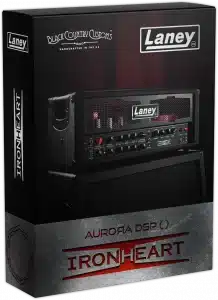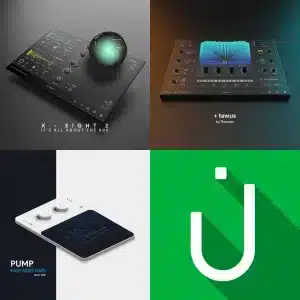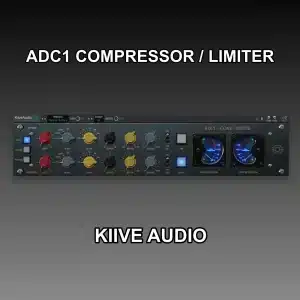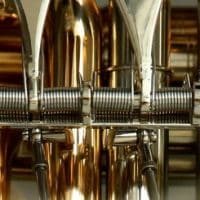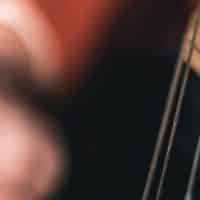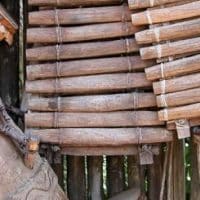Enhancing Realism In Orchestral Samples Part 2 – Brass In part 1 we talked about the string section and how to set them up in a template, and how to manipulate their midi data in order to create more realism. In this part 2 we will do the same thing,…

Enhancing Realism In Orchestral Samples Part 3 – Percussion
Part 1 and part 2 of this three part series dealt with the melodic instruments of the orchestra of strings, winds and brass and here we are in the final part of the series talking about percussion.
Percussion instruments are all about the rhythm. There are A LOT OF THEM and I do mean A LOT. They come in different sizes, materials, even different mallets or sticks; you name it. There are even pitched melodic percussion like tube bells, vibraphone, xylophone, marimba, glockenspiel, celeste… There are wooden and metal percussion instruments as well.
The possibilities are endless and the percussion section is the foundation of the big cinematic sound and all those heart-pumping action scenes you see in the movies. Remember that cue from Man Of Steel by Hans Zimmer? That’s the power of percussion. Let’s dive in.
THE RANGE:
Percussion instruments are mostly unpitched, i.e. they don’t produce playable notes but there are exceptions. Tube bells, timpani, glockenspiel, marimba, vibraphone, xylophone and celeste (even though it has keys) are considered as tonal percussive instruments. In other words, they can play a melody.

For more information on tonal ranges of percussion instruments, visit Vienna Symphonic Library.
THE SEATING:
The percussion section sits in the back of the orchestra but there are no particular rules when it comes to positioning. They are usually spread out in the back and there is no special seating place for each instrument in the section. It usually depends on the size of the scoring stage or the desires of the composer and the mixing engineer. They are usually grouped depending on the type of material or size of the drums. There is usually one percussionist playing multiple instruments so you will see small metallic percussion placed around one musician who plays them. Timpani come in pairs so you will also see maybe one or two musicians at the most playing them.
PERCUSSION SETUP IN A TEMPLATE:
I usually place my percussion below the rest of the orchestra and that’s also how it usually is on the score sheet. Since I use a lot of percussion in my template, I divide them into folders for melodic and metals. Timpani have their own folder and everything else is based on personal preference. When it comes to my articulations, they are also one per midi channel as with the rest of the orchestra, just to make my orchestrator’s life a lot easier!
Blending various percussion libraries is not as extensive as with the rest of the orchestra because you can use one library for one type of instrument, just tweak the mic samples if they have them, and most of the libraries nowadays do. Your percussion needs to sound snappy and massive, so blending close mic with the room mic samples is something you should pay attention to because too much room reverb can wash away the transients. I usually have my close mic samples at full and room mic samples at half and by doing so I get a nicely balanced tone.

VSS 2 is always there to help me position my percussion in the same space as the rest of the orchestra, I just place them further to the back so I get a full sense of drums being in the same room as the orchestra. My pre-delays for percussion are a little bit lower (even though percussion is in the back) because I need those snappy transients for action scenes. Same room and same mic setup are used as with the rest of the sections.

RECORDING THE PERCUSSION PARTS:
Percussion is all about dynamics and rhythm and most percussive libraries have their dynamics controlled by velocity. Some rolls and crescendos of the timpani and cymbals are controlled by modwheel.
So when it comes to percussion and short notes you have to get into those velocity layers and tweak them to create slight variations. Don’t make note velocities the same because you will achieve that machine gun effect and your percussion will sound mechanic and unnatural.

Pay close attention to low frequency drums and don’t make them play fast lines because they will result in building up your low end which will eat up your performance. Even though all percussion instruments are capable of playing fast, some are just not played that way. Use your lowest drums to accentuate on each start of the beat and no more than that.

If your percussion libraries don’t have recorded rolls and crescendos samples, one way to simulate that and make it sound realistic is to create 32nd of notes and raise the velocity of each following note in order to make that nice dynamic rolling effect of rising. This goes for both pitched and unpitched percussion instruments.
This covers our series on how to make your orchestra sound realistic enough to fool the average listener, so get out there and start practicing!

